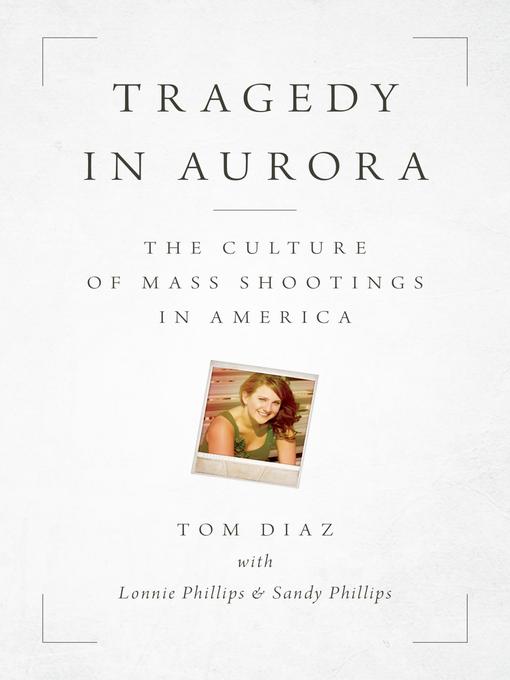
Tragedy in Aurora
The Culture of Mass Shootings in America
- اطلاعات
- نقد و بررسی
- دیدگاه کاربران
نقد و بررسی

July 12, 2019
Retired lawyer and former journalist Diaz (The Last Gun), in collaboration with Lonnie and Sandy Phillips, the parents of Aurora shooting victim Jessica (Jessi) Redfield Ghawl, write an earnest examination of U.S. gun violence. Chapters alternate between personal details (the horrific irony of Ghawl's being present at but escaping the June 2, 2012, Toronto food court shooting only to die six weeks later in the Aurora tragedy), and ambitious attempts to provide a historic context for how we got to this point and why nothing seems to be changing. The authors' use of statistics is compelling; they write, "We are shadowed by the knowledge that at any minute of any day another public mass shooting erupt," completing this book just before 12 people were killed at a Virginia Beach Municipal Center in June 2019; how many more mass shootings before there's dedicated change? VERDICT Recommended for general audiences, this book could provide solid reference points in conjunction with other sources on the topic, such as Dave Cullen's Parkland: Birth of a Movement.--Ellen Gilbert, Princeton, NJ
Copyright 2019 Library Journal, LLC Used with permission.

September 2, 2019
In this well-meaning but awkward mélange, lawyer and policy analyst Diaz (Making a Killing: The Business of Guns in America) combines a sprawling analysis of the American plague of mass shootings with the story of contributors Lonnie and Sandy Phillips, whose daughter, Jessi Ghawi, was killed in the Aurora shooting in 2012. Diaz argues that firearms manufacturers and the NRA exploit cultural divisions in the American electorate for profit. He compares Canada’s gun culture—where restrictions on guns and licenses have helped to minimize mass shootings—to that of the U.S., where traditional attachment to guns and unscrupulous rhetoric have derailed attempts to pass similar regulations. Meanwhile, he argues, more (and more powerful) guns proliferate, making incidents of mass violence more deadly, while gun control advocates have taken a top-down approach that has failed to galvanize cultural change. Meanwhile, the book incorporates the contributors’ family story (one chapter is titled “When Lonnie Met Sandy”), memories of Jessi, and excerpts from her social media accounts to give a human face to mass gun violence. The book is often difficult to follow and its language can be florid (at one point, a Batman cosplayer is called “a chilling portent, a threatening gesture, a flutter of the Angel of Death’s wings”). Readers can give this one a miss.




دیدگاه کاربران